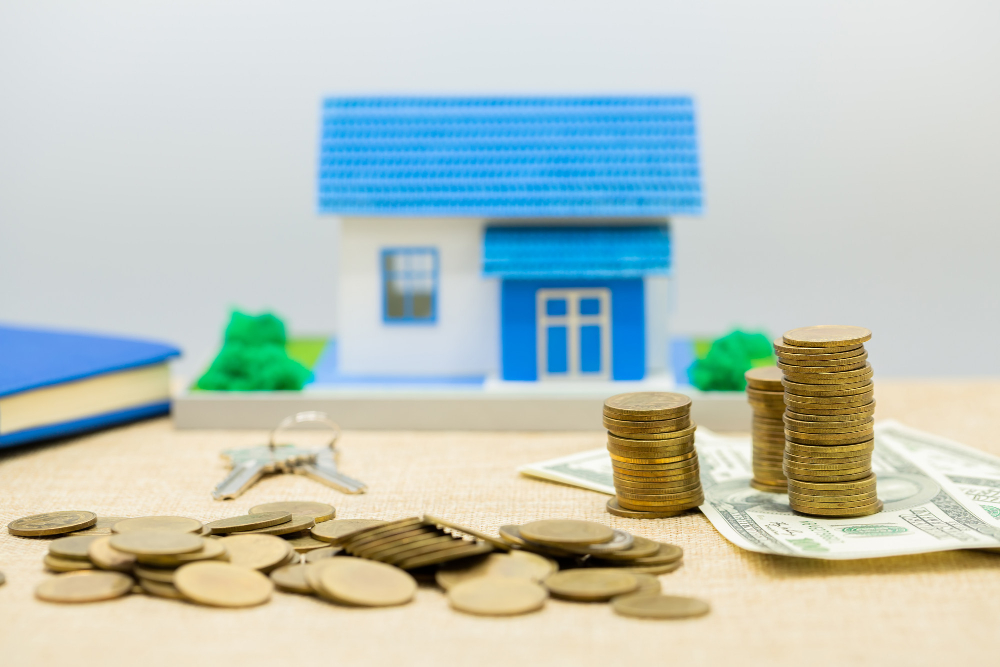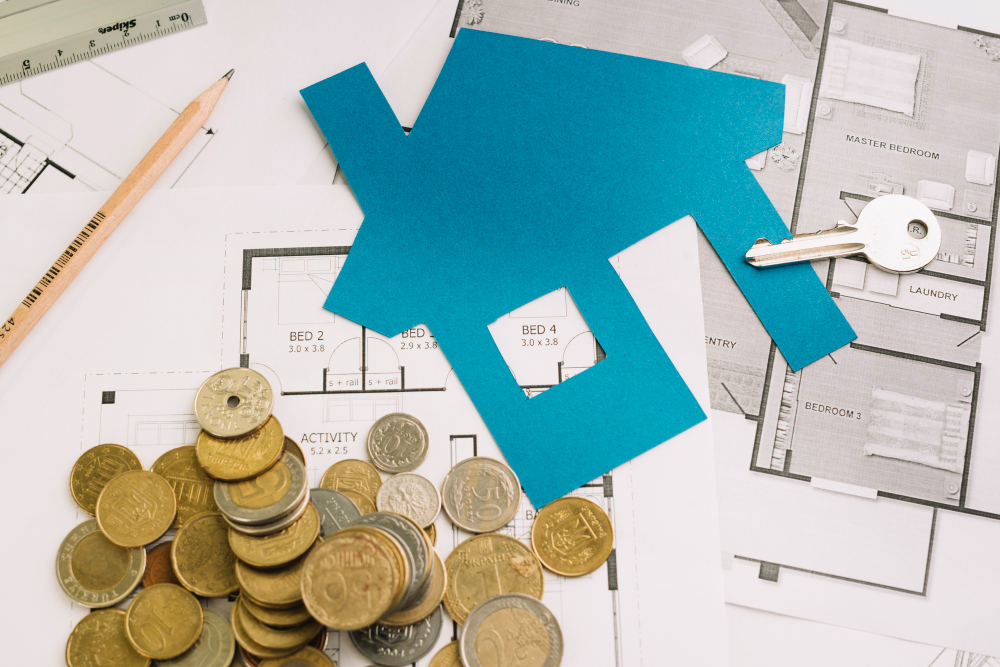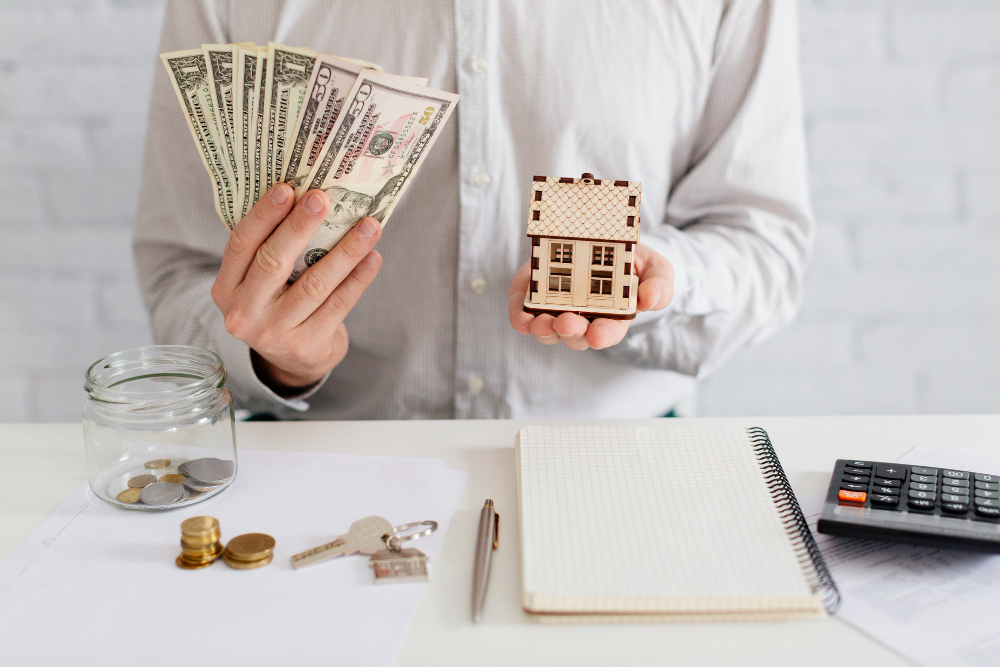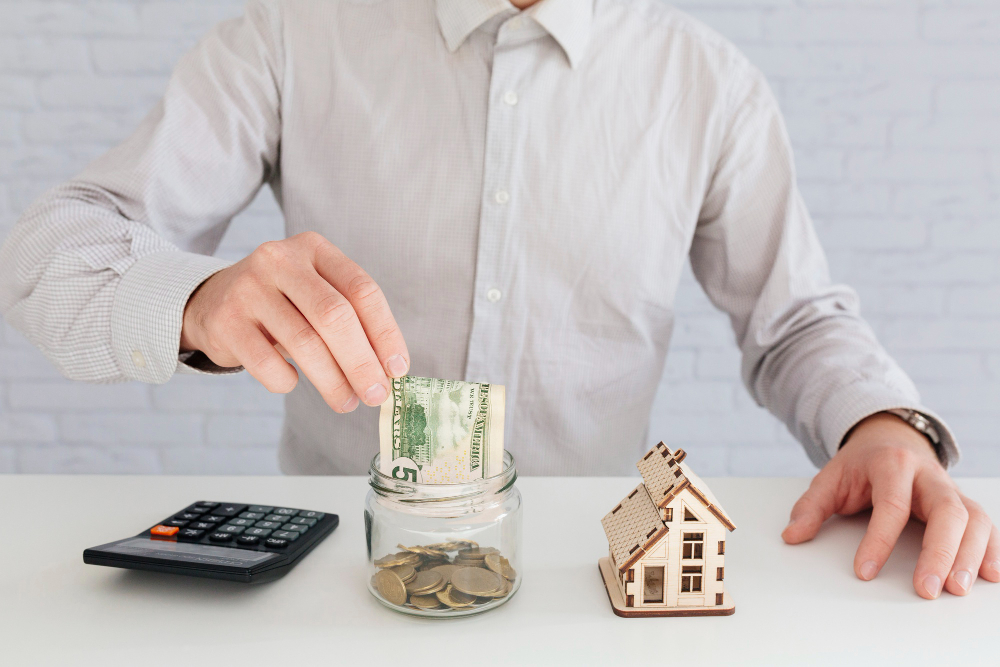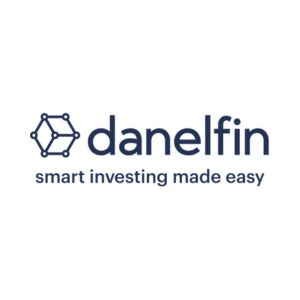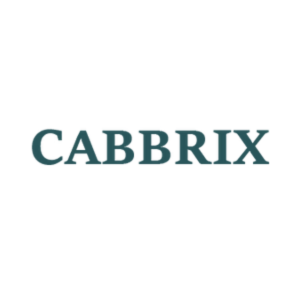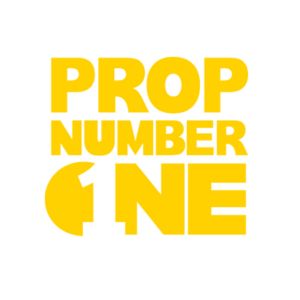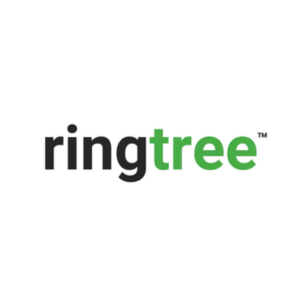
Best Way to Save for a House Fast: Strategies to Accelerate Your Home Buying Timeline
Introduction
Buying a home is one of the biggest financial milestones for most people. However, saving enough for a down payment and other costs can feel overwhelming, especially if you're unsure where to start. Learning how to save for a home effectively can accelerate your home-buying journey, making your dream of homeownership a reality sooner. This blog will explore key strategies and actionable tips that will help you save faster and more efficiently. Whether you’re a first-time buyer or looking to upgrade, having a clear, accelerated savings plan will bring you one step closer to the front door of your new home.
Why Saving for a Home is Important
Saving for a home is crucial because it provides the foundation for financial security and stability. Having a sizable down payment reduces your mortgage and helps you avoid additional costs, such as private mortgage insurance (PMI), often required for lower down payments. Additionally, when you save diligently, you establish better financial habits, gain an understanding of your spending, and prepare for the ongoing costs of homeownership. A well-planned savings approach not only minimizes debt but also makes homeownership more affordable in the long run, letting you focus on building equity and stability for the future.
Setting a Realistic Timeline for Homeownership
Once you understand the importance of saving, it’s time to set a realistic timeline for achieving your homeownership goal. Begin by assessing your current financial situation, including your income, expenses, and savings rate. Determine how much you can save each month and whether you need to adjust your budget or cut unnecessary expenses. A realistic timeline will keep you motivated, trackable, and focused on your goal without straining your finances. By setting a clear target date, you create a pathway to save for your home more effectively, turning the dream of homeownership into an achievable reality.
1. Assess Your Financial Situation
Understanding How Much You Need to Save for a Home
Before you start saving, it’s essential to have a clear understanding of how much you’ll need for a home. The total amount depends on several factors, including the price of the property, the down payment percentage, and additional fees like closing costs. Knowing your target savings amount will give you a clear goal to work towards and help you gauge how much you need to set aside each month. Begin by researching the average home prices in your desired area, as this will give you a realistic picture of what you’re aiming for. Saving for a home becomes much easier when you have a specific figure in mind, allowing you to build a focused strategy for reaching that amount faster.
Calculating Initial Expenses: Down Payment, Closing Costs, and More
When saving for a home, you’ll encounter several upfront costs that go beyond just the down payment. Here’s a breakdown of the main expenses you should consider:
Down Payment: The down payment is usually the largest initial expense. Typically, lenders require 5% to 20% of the home’s purchase price. A larger down payment often means lower monthly mortgage payments and may help you avoid additional costs, such as private mortgage insurance (PMI).
Closing Costs: These are fees associated with the final stages of the home purchase process and can range from 2% to 5% of the property’s purchase price. Closing costs often include expenses for home inspections, title insurance, attorney fees, and loan origination fees.
Moving and Setup Costs: Moving into a new home also involves extra expenses, such as hiring movers, purchasing essential furniture, or setting up utilities. While these may seem minor compared to other expenses, budgeting for them in advance can ease the transition to your new home.
Understanding and calculating these initial expenses will give you a comprehensive savings target. With a clear financial roadmap, you’ll be able to create a plan that allows you to save effectively and stay on track, bringing you closer to your goal of homeownership.
2. How to Save for a Home with a Dedicated Budget
Creating a Monthly Savings Goal
Setting a monthly savings goal is a critical step in achieving your homeownership dream efficiently. Once you know your target savings amount for a home, break it down into manageable monthly contributions. Calculate how much you need to save each month based on your ideal timeline for buying a home. For example, if you’re aiming to save $20,000 over two years, you’ll need to set aside approximately $833 per month. Automating your savings by setting up a dedicated savings account and scheduling monthly transfers can keep you on track and make the process effortless. A clear monthly savings goal will help you stay disciplined and motivated as you work towards your down payment.
Identifying Areas to Cut Back on Spending
Accelerating your savings often means adjusting your spending habits to free up more funds. Start by reviewing your monthly expenses and categorizing them into “essential” and “non-essential” spending. Look for areas where you can cut back, such as dining out, entertainment subscriptions, or unnecessary shopping. You might also consider more strategic cuts, like reducing your utility usage, canceling unused subscriptions, or opting for a more affordable mobile plan. Every dollar saved in these areas brings you closer to your home savings goal. By prioritizing your future home over short-term expenses, you’ll make faster progress and gain the financial discipline needed for a sustainable path to homeownership.
3. Build an Emergency Fund Alongside Your Savings
Why an Emergency Fund Matters Before Home Buying
An emergency fund is a crucial financial safety net, especially before taking on the responsibilities of homeownership. Buying a home comes with unexpected expenses, such as repairs, maintenance, or sudden changes in your financial situation. Without an emergency fund, you risk derailing your homeownership plans due to unforeseen costs. An emergency fund not only provides peace of mind but also helps you avoid accumulating debt when life throws you curveballs. By prioritizing the establishment of an emergency fund, you ensure that you can handle surprises without jeopardizing your mortgage payments or savings goals. A well-rounded financial strategy that includes an emergency fund empowers you to navigate the home-buying process confidently.
How Much to Set Aside for Unexpected Costs
Determining how much to set aside for unexpected costs can be challenging but essential. A good rule of thumb is to aim for three to six months' worth of living expenses as a baseline for your emergency fund. This amount should cover essential expenses, including mortgage payments, utilities, groceries, and transportation. Additionally, when budgeting for your home purchase, consider setting aside a separate fund specifically for home-related emergencies, such as roof repairs, appliance replacements, or plumbing issues. Aiming for 1% to 3% of your home’s value annually can help you anticipate and save for these costs. By preparing for unexpected expenses in advance, you can maintain financial stability while enjoying the benefits of homeownership without added stress.
4. How to Increase Your Income to Save for a Home Faster
Exploring Part-Time Gigs and Freelance Opportunities
To boost your savings for a home, consider exploring part-time gigs and freelance opportunities that align with your skills and interests. These flexible options allow you to earn extra income without committing to a full-time job. Websites like Upwork, Fiverr, and TaskRabbit offer platforms to connect with clients seeking a variety of services, from graphic design and writing to home repairs and tutoring. Even a few hours each week can significantly contribute to your home savings. Additionally, local gig platforms or community boards can connect you with nearby opportunities, allowing you to network and build a client base. By diversifying your income streams through part-time work or freelance projects, you accelerate your savings journey while gaining valuable experience.
Investing in Skills for Higher-Paying Opportunities
Investing in your skills is another strategic way to increase your earning potential and save for a home faster. Identify areas where you can enhance your expertise or learn new skills that are in demand in today’s job market. Online courses, workshops, and certification programs can offer valuable knowledge and credentials, making you more competitive and opening doors to higher-paying job opportunities. Consider fields like technology, digital marketing, or project management, where skilled professionals are often well-compensated. By committing to continuous learning and professional development, you can position yourself for career advancement that aligns with your goal of homeownership. A higher income not only accelerates your savings but also provides you with more financial stability when it comes time to buy your new home.
5. Automate Your Savings for Consistent Progress
Setting Up Automatic Transfers to a Savings Account
One of the most effective ways to ensure that you consistently save for a home is by setting up automatic transfers to a dedicated savings account. This process involves scheduling regular transfers from your checking account to your savings account, ideally right after you receive your paycheck. By automating your savings, you remove the temptation to spend that money elsewhere. Start by determining how much you can comfortably save each month based on your budget and savings goals. For example, if you’ve calculated that you need to save $1,000 for the down payment each month, set up an automatic transfer for that amount. This hands-off approach makes saving for a home effortless and ensures that your savings grow consistently without requiring constant monitoring or discipline.
How Automated Savings Boosts Consistency
Automated savings significantly boost your consistency in reaching your homeownership goals. When you automate your transfers, you create a structured saving habit that reinforces your commitment to saving. This consistency helps you build momentum, making it easier to reach milestones like your down payment. Additionally, with your savings growing automatically, you can focus on other financial responsibilities without the stress of remembering to set aside funds each month. Over time, you’ll find that your savings accumulate more quickly, bringing you closer to your goal of homeownership. Ultimately, automated savings not only simplifies the process but also instills a sense of accountability, helping you stay focused on achieving your dream of buying a home.
6. Prioritize Debt Repayment for a Healthier Credit Profile
The Impact of Debt on Your Home Buying Goals
Debt can significantly impact your ability to save for a home and achieve your home-buying goals. Lenders evaluate your debt-to-income (DTI) ratio, which compares your monthly debt payments to your gross monthly income, when considering your mortgage application. A high DTI ratio can make it challenging to qualify for a mortgage or secure favorable interest rates. Additionally, ongoing debt obligations reduce the amount of money you can allocate toward your home savings. Whether it's student loans, credit card debt, or personal loans, these financial responsibilities can create obstacles in your path to homeownership. Understanding how debt affects your financial landscape is crucial for developing a strategic plan to save effectively and make informed decisions about your future home.
How Reducing Debt Frees Up Funds for Savings
Reducing your debt not only improves your financial health but also frees up funds that can be redirected toward your home savings. Start by assessing your current debt situation and prioritizing which debts to pay off first. Focus on high-interest debts, such as credit cards, as these can accumulate quickly and take a significant bite out of your budget. By creating a debt repayment plan, you can systematically reduce your obligations, allowing more of your income to go toward savings for your home. For instance, once you pay off a credit card, consider channeling that monthly payment into your savings account instead. As you lower your debt, you’ll find yourself with more disposable income, making it easier to reach your homeownership goals faster. Ultimately, managing and reducing debt enhances your financial stability, giving you the freedom to save more effectively for your dream home.
7. Consider High-Yield Savings Accounts for Better Growth
Benefits of High-Yield Savings Accounts
High-yield savings accounts (HYSA) are an excellent tool for accelerating your savings as you prepare to buy a home. Unlike traditional savings accounts that offer minimal interest, high-yield accounts provide significantly higher interest rates, allowing your money to grow faster. This means you earn more on your savings without having to invest in riskier assets. Additionally, many HYSAs have no monthly fees or minimum balance requirements, making them accessible for anyone looking to save. By parking your home savings in a high-yield account, you not only protect your funds but also take advantage of the higher returns, helping you reach your down payment goal more quickly. These accounts also provide liquidity, allowing you to access your funds easily when you're ready to make your home purchase.
How Compound Interest Accelerates Savings
One of the most powerful features of high-yield savings accounts is the benefit of compound interest. Unlike simple interest, which only calculates interest on the initial principal, compound interest earns interest on both the initial principal and the accumulated interest from previous periods. This means that your savings grow at an accelerating rate over time. For example, if you deposit $10,000 in a high-yield savings account with a 2% annual interest rate, you’ll earn $200 in interest after one year. However, in the second year, you earn interest not just on your initial deposit but also on the $200 interest earned in the first year, resulting in $204 in interest for the second year. The longer your money remains in the account, the more pronounced the effects of compound interest become, making it an effective strategy for building your home savings. By understanding and leveraging compound interest, you can significantly accelerate your journey toward homeownership.
8. Cut Out Non-Essential Expenses to Save for a Home
Identifying and Reducing Unnecessary Expenses
When saving for a home, reducing unnecessary expenses is essential to maximize your savings. Start by reviewing your monthly spending and identifying areas where you can cut back without sacrificing quality of life. Look for discretionary expenses, such as dining out, subscription services, and impulsive shopping, that may be eating away at your budget. By tracking each dollar spent, you gain a clear view of spending patterns and identify habits that could be adjusted. Reducing or eliminating these unnecessary costs can free up a substantial amount for your home savings. Prioritizing needs over wants, and focusing on what truly adds value to your life, allows you to allocate more money toward your homeownership goal without feeling deprived.
Budget-Friendly Alternatives for Everyday Spending
Switching to budget-friendly alternatives in your daily life can also help increase your savings rate. Small changes, such as brewing coffee at home instead of buying it daily, can add up significantly over time. Consider meal prepping to reduce the cost of takeout, and look for free or low-cost entertainment options in your area, such as community events, parks, or local markets. When it comes to shopping, explore thrift stores, discounts, or digital coupons, which can save you money on essentials. These small adjustments to your spending habits create a ripple effect on your budget, making it easier to save for your future home while still enjoying the things you love. Embracing budget-friendly choices ultimately enables you to reach your savings goals faster and maintain a balanced, financially healthy lifestyle.
9. How to Save for a Home with Smart Financial Investments
Diversifying Investments for Long-Term Growth
While traditional savings are essential for stability, diversifying your investments can help you achieve faster, long-term growth, ultimately accelerating your path to homeownership. Diversification involves spreading your funds across different types of investments—such as stocks, bonds, mutual funds, and real estate investment trusts (REITs)—to mitigate risk and increase the likelihood of positive returns. By putting a portion of your savings in assets with growth potential, you may be able to grow your home-buying fund at a faster rate. Many investment platforms allow you to start with small amounts, making it accessible even if you’re new to investing. Diversifying wisely helps you maintain a balanced portfolio that grows over time, complementing your traditional savings.
How to Balance Savings with Low-Risk Investments
Balancing your savings with low-risk investments is essential when your goal is to buy a home within a short timeframe. While high-risk investments might promise high returns, they come with greater potential for losses, which could set back your savings plan. Instead, consider safer investment options like high-yield savings accounts, certificates of deposit (CDs), or bonds that offer modest returns without significant risk. For a slight increase in growth potential, you could look at conservative exchange-traded funds (ETFs) or balanced mutual funds, which combine stocks and bonds for stable, lower-risk returns. By balancing cash savings with these low-risk investments, you’re able to grow your funds at a steady rate without jeopardizing your goal. This strategy allows you to build a robust home-buying fund while keeping your finances secure.
Conclusion
Commitment and Consistency: Keys to Saving for Your First Home
When it comes to saving for a home, commitment and consistency are essential. It’s easy to feel motivated at the beginning, but sustaining that motivation requires dedication. Set clear, realistic goals, and remind yourself regularly why buying a home is important to you. Stick to your budget, make savings a priority, and consistently review your progress to stay on track. Even small contributions, when made consistently, can grow significantly over time. By viewing your savings journey as a series of manageable steps, you can maintain momentum and celebrate your progress along the way. This consistent commitment ensures that each action you take, no matter how small, brings you closer to your dream of homeownership.
Starting Today: Putting Your Plan into Action
The best way to make progress toward your home-buying goals is to start today. Begin by implementing one or two key strategies, like setting up automatic transfers to your savings account or reviewing your budget for areas to cut back. Don’t wait for the “perfect” time—taking immediate action is what creates momentum. Whether it’s setting a monthly savings goal, committing to a side hustle, or moving your money into a high-yield savings account, every step you take today lays the foundation for a stronger financial future. Remember, your plan doesn’t need to be flawless from day one; it just needs to be active. By putting your plan into motion, you’re one step closer to achieving the financial security and confidence to purchase your first home.







